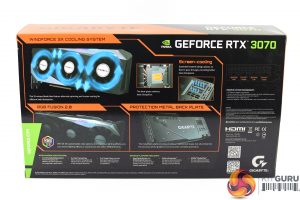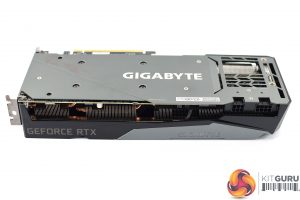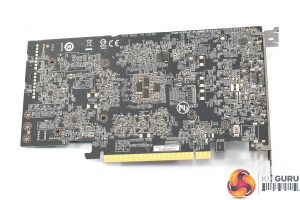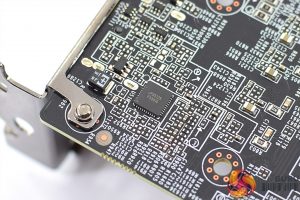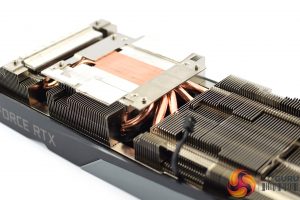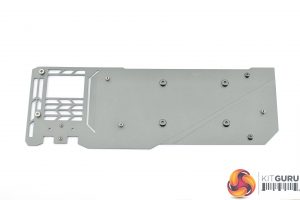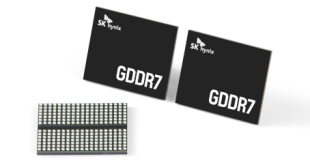The Gigabyte RTX 3070 Gaming OC ships in a black box, with the company's large robotic eye logo taking pride of place on the front.
On the back, Gigabyte highlights some key features of the Gaming OC, including the WindForce 3X cooler, metal backplate and RGB lighting.
Two pieces of documentation are included; one that gives details on how to extend the product warranty to four years by registering the graphics card, while the other is a quick start guide.
Now, let's look at the graphics card itself. Gigabyte hasn't radically changed the design of its Gaming OC series since the last time we looked at a product from this family, with just a few more bits of grey on the shroud to break it up a little. It's overall a pretty understated look, and certainly compared to something like the MSI RTX 3070 Gaming X Trio, it is much less aggressive in its appearance.
For the cooler, Gigabyte is using its WindForce 3X design, obviously meaning it is a triple-fan configuration, with each fan measuring approximately 85mm. As we have come to expect, this cooler uses Gigabyte’s Alternate Spinning feature, where the central fan spins in reverse relative to the outer two, which should reduce turbulence and increase overall pressure down onto the heatsink itself. This is something we’ve now started seeing other manufacturers, like ASUS, do as well.
In terms of its size, it's not exactly a small graphics card, but it's not on the same level as the Gaming X Trio. With official dimensions of 286 x115 x 51 mm, it’s a 2-and-a-half slot card, but it is also quite short as it just fractionally taller than the PCIe bracket itself, which could appeal to those with particularly narrow cases.
Moving on to look at the backplate, this a full-length metal backplate, which is always something I am glad to see. It's a lovely shade of grey too, it almost looks silver depending on how the light hits it, and personally I think it looks great. The cut-out at the end of the backplate is designed to allow air to pass directly through the heatsink and out the back of the card.
We can also spy a dual-BIOS switch along the front side. By default the card uses the OC BIOS, but there is a Silent BIOS as well, and we test the differences between the two later on in this review.
Elsewhere, Gigabyte has opted for 1x 8-pin and 1x 6-pin power connectors, while display outputs consist of 2x DisplayPort 1.4a, and 2x HDMI 2.1.
Now then, let's look at the PCB. The GPU VRM is a 9-phase configuration, using AOZ5311NQI MOSFETs from Alpha and Omega, which are rated for 50A continuous output.
The GPU VRM is controlled by a UPI uP9512R (seen above, left) while the memory VRM is controlled by a UPI uS5650Q (above, right).
For the memory VRM, Gigabyte uses UPI Semi QN3106 and QN3102 N-Channel MOSFETs, with the QN3106 being deployed as two units per phase. This means that you get 2xQN3106 and 1xQN3102 N-Channel MOSFETs per memory VRM phase.
We can also note Gigabyte continues to use power extensions, meaning the 6 and 8-pin power connectors are not directly attached to the PCB, presumably to help with cable management.
In terms of the heatsink, this utilises three separate aluminium finstacks, which are connected by 5x 6mm copper heatpipes. These heatpipes make direct contact with the GPU die, while there’s an additional plate around the central mounting area which contacts with the Samsung GDDR6 memory via thermal pads.
The only slight disappointment is that the backplate doesn't contact with the back of the PCB. While this doesn't usually make a huge difference, I figure if you have the metal plate, you may as well use it to spread the heat out a little bit – just a few thermal pads on the back of the PCB would do the job.
 KitGuru KitGuru.net – Tech News | Hardware News | Hardware Reviews | IOS | Mobile | Gaming | Graphics Cards
KitGuru KitGuru.net – Tech News | Hardware News | Hardware Reviews | IOS | Mobile | Gaming | Graphics Cards



